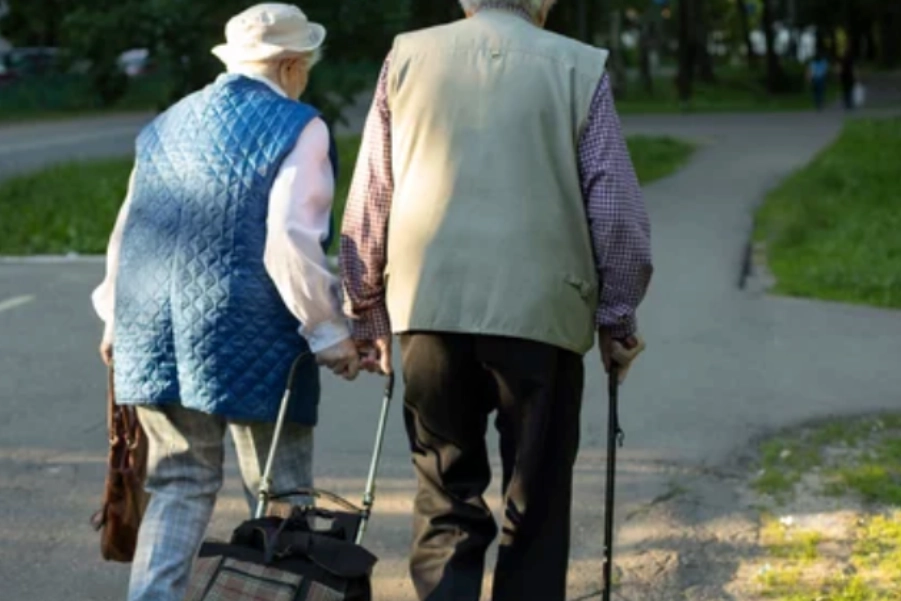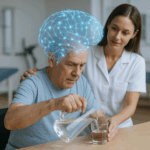Neurological Physiotherapy Treatment Protocol for Balance Impairment Due to Age-Related Decline
Overview of Conditions
Age-related balance impairment is a common condition affecting older adults, increasing the risk of falls and reducing functional independence. As people age, several factors contribute to balance problems, including muscle weakness, sensory decline (e.g., vision and vestibular), reduced proprioception, and cognitive impairments. These changes, compounded by underlying conditions like osteoarthritis and cardiovascular diseases, can disrupt the body’s ability to maintain stability during static and dynamic tasks.
Clinical Manifestations:
- Postural Instability: Difficulty maintaining an upright posture, especially during transitions (e.g., standing up or walking).
- Gait Disturbances: Shortened step length, shuffling gait, and difficulty turning and changing directions.
- Coordination Deficits: Difficulty with tasks that require complex movement patterns (e.g., walking while carrying objects).
- Sensory Deficits: Decreased proprioception, reduced vestibular function, and visual impairments contributing to balance issues.
- Slower Reaction Times: Delayed responses to posture or environmental changes, increasing fall risk.
Symptomatology and Probable Deficits
- Postural Instability: Difficulty standing on one leg, adjusting posture during weight shifts, and recovering from a balance loss.
- Gait Impairments: Slow walking, shuffling gait, and difficulty turning or walking on uneven surfaces.
- Coordination Deficits: Difficulty performing tasks requiring coordinated upper and lower limb movements (e.g., bending down and reaching forward).
- Sensory Decline: Impaired spatial awareness due to reduced proprioception and vestibular function.
- Decreased Strength: Weakness in lower limb muscles (e.g., quadriceps, hamstrings, calves), impairing the ability to maintain stability during weight-bearing activities.
Assessment and Evaluation
- Functional Task Impairment Assessment:
- Berg Balance Scale (BBS): Assesses balance during tasks like sitting, standing, reaching, and turning.
- Timed Up and Go (TUG) Test: Measures mobility, gait, and balance by timing the completion of a simple mobility task.
- Functional Reach Test: Evaluates postural stability by measuring how far an individual can reach forward while maintaining balance.
- Romberg Test: Assesses proprioception and balance by evaluating the ability to stand with eyes open and closed.
- Gait Speed Test: Assesses walking speed and stability.
- Key Functional Impairments:
- Postural Instability: Difficulty standing or maintaining posture, especially during weight-shifting or transitions.
- Gait Disturbances: Slow, unsteady gait and trouble with turning or making smooth strides.
- Coordination Deficits: Difficulty with tasks requiring simultaneous upper and lower limb coordination.
- Sensory Deficits: Reduced body awareness and balance control.
Goal Setting
- Short-term Goals (2-4 weeks):
- Improve static balance and postural control during standing and sitting.
- Increase gait speed and symmetry with basic walking tasks.
- Begin lower limb strengthening exercises to improve muscle activation and mobility.
- Enhance proprioception through balance exercises with varied sensory input.
- Long-term Goals (6-12 weeks):
- Achieve independent ambulation with improved gait and postural stability.
- Reduce fall risk through strengthening, balance training, and proprioception exercises.
- Return to independent living with enhanced balance, strength, and mobility.
Recommended Interventions
- Balance Training Exercises
- Description: Focuses on improving static and dynamic balance by challenging the center of gravity and enhancing postural control.
- Scientific Basis: Balance training has been shown to reduce fall risk and improve stability (Sherrington et al., 2019).
- Protocol:
- Start with basic exercises like one-leg stands and heel-to-toe walking.
- Progress to more dynamic tasks such as standing on an unstable surface or tandem walking.
- Include weight-shifting and posture-adjusting tasks.
- Evidence: Proven to significantly reduce fall risk and improve balance in older adults (Sherrington et al., 2019).
- Strengthening Exercises for Lower Extremities
- Description: Focused on enhancing muscle power, endurance, and postural control in the lower limbs.
- Scientific Basis: Strengthening lower extremity muscles like quadriceps, calves, and hips restores functional mobility and stability (Liu-Ambrose et al., 2020).
- Protocol:
- Include exercises like squats, lunges, heel raises, and step-ups.
- Add functional tasks like sit-to-stand or transfers.
- Evidence: Lower extremity strengthening improves gait, postural control, and reduces fall risk (Liu-Ambrose et al., 2020).
- Proprioceptive and Sensory-Motor Exercises
- Description: Improves proprioception and sensory integration, crucial for maintaining balance.
- Scientific Basis: Enhanced proprioception helps maintain dynamic balance (Carter et al., 2021).
- Protocol:
- Start with exercises like standing on a balance pad or foam surface.
- Progress to tasks involving visual deprivation or head position changes.
- Evidence: Effective in improving balance and postural stability in older adults (Carter et al., 2021).
- PNF (Proprioceptive Neuromuscular Facilitation)
- Description: Uses diagonal movement patterns to enhance motor control and coordination.
- Scientific Basis: PNF patterns improve functional movement patterns, including gait and posture (Knott & Voss, 2020).
- Protocol:
- Incorporate upper limb patterns with lower limb movements.
- Progress to dynamic balance tasks like walking while reaching or rotating.
- Evidence: Improves functional mobility and postural stability (Knott & Voss, 2020).
- Functional Task Training
- Description: Focuses on practicing real-life activities to improve balance and reduce fall risk.
- Scientific Basis: Functional training is key to enhancing independence and quality of life in older adults (Buchner et al., 2020).
- Protocol:
- Start with simple tasks like sit-to-stand and transfers.
- Progress to complex activities like climbing stairs or walking over obstacles.
- Evidence: Improves balance, mobility, and reduces falls in older adults (Buchner et al., 2020).
Precautions and Special Considerations:
- Monitor for signs of fatigue and take regular breaks to avoid overexertion.
- Ensure exercises are performed in a safe environment with assistive devices if necessary.
- Proper footwear is important to avoid slipping during balance exercises.
Reassessment Criteria for Progression:
- Improved balance, as measured by the Berg Balance Scale (BBS) and Timed Up and Go (TUG).
- Increased gait speed and step length.
- Decreased fall risk, demonstrated by improved functional task performance and self-reported fall history.
References:
- Sherrington, C., et al. (2019). “Exercise to prevent falls in older adults: An updated systematic review and meta-analysis.” British Journal of Sports Medicine, 53(1), 16-21.
- Liu-Ambrose, T., et al. (2020). “The effect of a strength training program on the physical function and balance of older adults.” Clinical Rehabilitation, 34(5), 752-761.
- Carter, L., et al. (2021). “Proprioceptive training to improve balance and reduce fall risk in older adults: A systematic review.” Clinical Gerontologist, 44(4), 348-356.
- Buchner, D. M., et al. (2020). “Physical activity and falls prevention in older adults.” Journal of Aging and Physical Activity, 28(2), 141-147.
- Knott, M., & Voss, D. (2020). Proprioceptive Neuromuscular Facilitation: Patterns and Techniques. 4th ed. McGraw-Hill.
Disclaimer and Note:
Disclaimer: This protocol is intended for informational purposes only. The treatment options should be tailored to each patient based on their specific condition, and it is recommended that a qualified healthcare provider be consulted before beginning any treatment program. Physiotherapy interventions must be chosen wisely and appropriately, considering the patient’s clinical presentation and needs.






